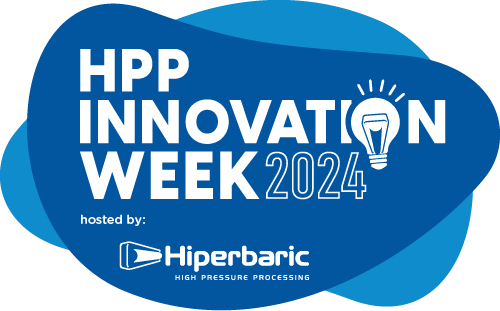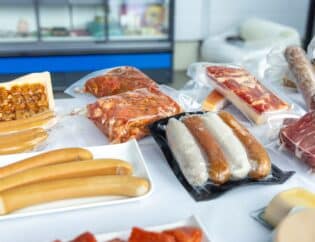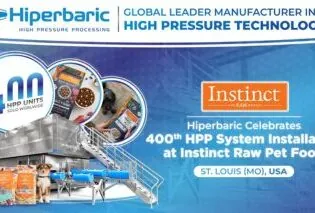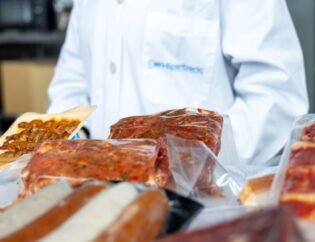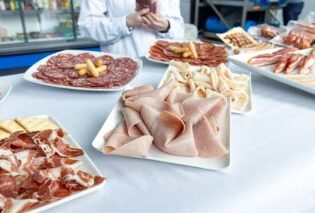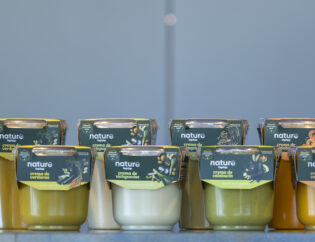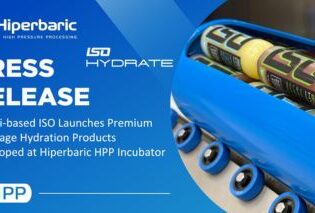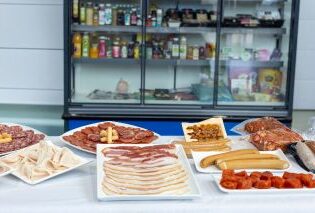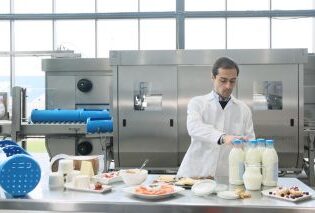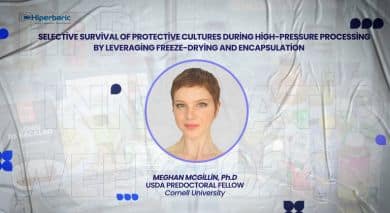
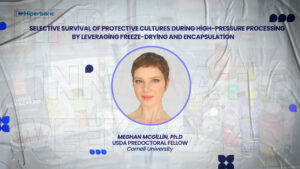
In this post, we would like to share with you the article written by the winner of the HPP Research Awards 2024, Meghan McGillin, as a summary of her study. The study is titled “Innovative Approaches to Food Safety: Use of Protective Cultures and High Pressure Processing (HPP)”.
From Hiperbaric we are proud that with this kind of initiatives we can give more visibility to interesting studies like this one and we thank all the participants for their effort and dedication.
Without further ado, we leave you with Meghan’s fascinating study. We hope you find it as interesting as we do.
Innovative Approaches in Food Safety: Leveraging Protective Cultures and High-Pressure Processing
The research centers HPP technology within three major trends shaping the future of our food system:
- increased recognition of food’s role in health
- demand for clean-label preservation methods
- holistic understanding of microbes’ roles in human health and food safety.
Specifically, the research presents a proof-of-concept encapsulation system for HPP-products containing freeze-dried cultures.
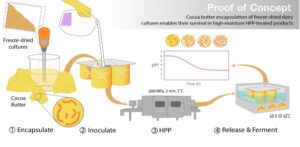
Protective Cultures
Although this proof-of-concept system is applicable to all freeze-dried bacterial cultures, our use of commercially available protective cultures enhances the food safety of HPP-treated products while maintaining the clean-label and minimally processed appeal of HPP.
Protective cultures is a bio-preservation technique based on the use of live microbes to combat foodborne pathogens and spoilage agents.
It is a microbial partnership with the “good” bacteria to target undesirable microbes by either by displacing them, outcompeting with them for nutrients, or eliminating through the production of antimicrobial metabolites.
The protective strains used in this study inhibit mold and yeast in dairy products through the production of acid.
This kind of approach to food safety represents a significant paradigm shift in modern food microbiology.
Protective cultures challenge the traditional view that microbes are merely sources of spoilage or disease.
As such, protective cultures align with two key trends in the food industry:
- Growing public acceptance of beneficial microorganisms.
- Demand for minimally processed and clean-labeled foods.
High-Pressure Processing (HPP)
Similar to protective cultures, HPP is another clean-label alternative preservation technique.
HPP inactivates microbes by subjecting them to high-pressure levels (100-600 MPa), extending the shelf life of food products without impacting their “fresh” appearance or sensory attributes.
Microbial Limitations of HPP
Despite its advantages, HPP poses challenges for foods containing desired active cultures, like protective cultures or probiotic yogurt.
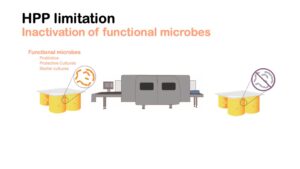
Conversely, bacterial spore formers can survive HPP treatment, which is problematic for low-acid foods like milk and hummus, where the pathogenic spore former, Clostridium botulinum, becomes a safety concern.
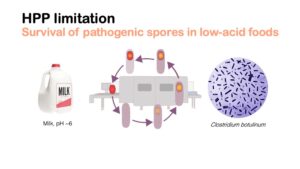
Innovative Solution: Freeze-Drying and Cocoa Butter Encapsulation
To address this, we developed a cocoa butter encapsulation system that allows the selective survival of desirable cultures (i.e., protective cultures) during HPP.
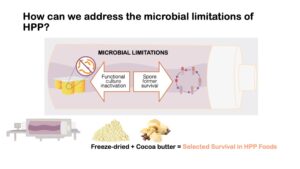
The Role of Freeze-Dried Cultures
The freeze-dried state is an important part of this equation.
Freeze-drying reduces the water content of cells, rendering them metabolically dormant and increasing their tolerance to stressful conditions, similar to how spores protect themselves.
Recognizing this shared state between the spores and freeze-dried cultures, we hypothesized that the protective mechanism that allowed spores to survive HPP could apply to freeze-dried cells, as well.
We were correct. When we subjected freeze-dried cultures to HPP, they survived the treatment in high numbers.
In contrast, when we rehydrated the cultures before HPP, returning them to their active state, they did not survive, demonstrating the protective effect of freeze-drying.
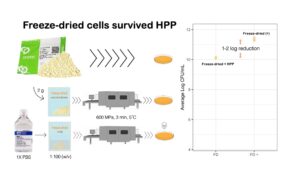
Encapsulation Process
Although promising, this wouldn’t work in high moisture foods because, as previously demonstrated, rehydrated cultures regain sensitivity to HPP.
For this to work in something like milk we need an encapsulation system that keeps them dry prior to and during HPP but allows them to rehydrate afterwards.
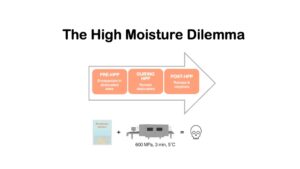
This is where cocoa butter enters the equation.
Using a homogenizer, we embedded our freeze-dried cultures within a solid lipid matrix. We used a response surface model to optimize the encapsulation process, ensuring it did not significantly affect the viability of our cells.
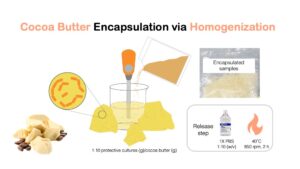
Viability and Activity
The next question was, does the cocoa butter successfully prevent the migration of moisture from re-hydrating our cells?
To answer this, we stored our encapsulated cultures in a liquid prior to HPP and measured it’s post-HPP counts (viability) and acidification activity.
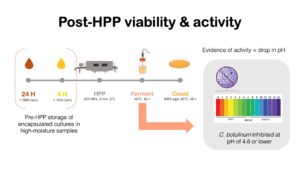
Even when stored in liquid for 24 hours before treatment, we found that the encapsulated cultures maintained high viability and activity after HPP treatment.
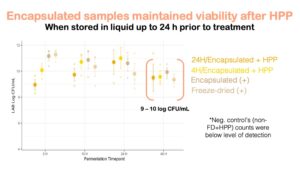
The encapsulated cultures also retained their acidification abilities, showing promise for targeting C. botulinum and expanding HPP’s potential in fermented foods.
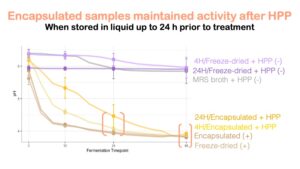
Implications and Future Directions
Circling back the main question of this work: How do we overcome microbial challenges in HPP?
This work shows that, by leveraging freeze-dried protective cultures and cocoa butter, we could add the second hurdle needed to target spore forming pathogens, thus enhancing the food safety of HPP while maintaining it’s clean-label appeal and expanding its application to low-acid foods.
More broadly, we developed a system that integrates functional cultures in HPP-treated foods without compromising viability or activity, expanding HPP application for probiotic and fermented foods, which play a significant role in the health food space.
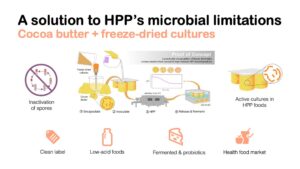
Collectively, this work bridges the gap between HPP and the three major and inter-related trends shaping our food industry: the increased value in healthy diets, the demand for clean-label preservation methods, and the more nuanced appreciation for microbial systems.
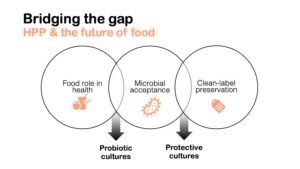
If you’re interested in learning more about Meghan McGillin’s studio, you can watch the full session of her HPP Innovation Week 2024 exhibit here.

